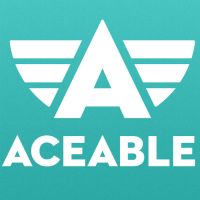Before an individual under the age of 18 can obtain a driver’s license in California, they must take a California state-approved driver’s ed course, obtain a driving permit and complete 50 hours of driving practice.
The requirements to obtain a permit in California are pretty straightforward, but let’s get into the exact details.
The 4 Best Online Driver’s Ed Courses In California
Eligibility To Get A California Driving Permit
A minor is a person under 18 years of age. Minors must have their applications (for a driver’s license or any change of driver’s license class), signed by their parent(s) or legal guardian(s). If both parents/guardians have joint custody, both must sign.
NOTE: Minors may not work as a driver for pay and they may not drive a school bus containing pupils.
To get a permit you must:
- Be at least 15½ years of age, but under 18 years of age.
- Complete the Driver License or Identification Card Application (DL 44) form.
- Have your parent(s) or guardian(s) sign the DL 44 form.
- Pass the traffic laws and road signs test. If you fail the test, you must wait one week before retaking the test.
- If you are 15½ –17½ years of age, you will need to provide proof that you:
- Completed driver education (Certificate of Completion of Driver Education) OR
- Are enrolled and participating in an approved integrated driver education/driver training program (Certificate of Enrollment in an Integrated [Classroom] Driver Education and Driver Training Program). For more information, refer to the Provisional Licensing (FFDL 19) Fast Facts brochure at www.dmv.ca.gov.
The provisional permit is not valid until you start your behind-the-wheel driver training with an instructor or reach age 17½.
If you have a permit and plan to drive outside of California, check licensing requirements in that state or country.
NOTE: If you are at least 17½ years of age, you may obtain a permit without completing driver education or driver training. However, you cannot get a driver license before you are 18 years old.
Restrictions To Driving Permits For Minors
Your permit is not valid until you begin driver training; your instructor will sign the permit to validate it. You must practice with a licensed California driver: parent, guardian, driving instructor, spouse, or an adult 25 years of age or older. The person must sit close enough to you to take control of the vehicle at any time. A provisional permit does not allow you to drive alone – not even to a DMV office to take a driving test.
Driver’s License Requirements For Anyone Under 18 Years Old
You must:
- Be at least 16 years old.
- Prove that you have finished both driver education and driver training.
- Have had a California instruction permit or an instruction permit from another state for at least six months.
- Provide parent(s) or guardian(s) signature(s) on your instruction permit stating that you have completed 50 hours of supervised driving practice (10 hours must be night driving) as outlined in the California Parent-Teen Training Guide (DL 603). Visit the Teen website at www.dmv.ca.gov/teenweb/ or call 1-800-777-0133 to request this booklet.
- Pass the behind-the-wheel driving test. You have three chances to pass the driving test while your permit is valid. If you fail the behind-the-wheel driving test, you must pay a retest fee for a second or subsequent test and wait two weeks before you are retested.
Once you have your provisional driver license, you may drive alone, as long as you do not have any collisions or traffic violations.
When you become 18 years old, the “provisional” part of your driver license ends. You may keep your provisional photo license or pay a fee for a duplicate driver license without the word “provisional.”
During the first 12 months after you are licensed, you cannot drive between 11 p.m. and 5 a.m. and you cannot transport passengers under 20 years of age unless you are accompanied by a licensed parent or guardian, a licensed driver 25 years of age or older, or a licensed or certified driving instructor.
Driver’s License Restrictions For Minors
The law allows the following exceptions when reasonable transportation is not available and it is necessary for you to drive. A signed note explaining the necessity to drive and the date when this driving necessity will end must be kept in your possession for the following exceptions (emancipated minors are excluded from this requirement):
- Medical necessity to drive when reasonable transportation alternatives are inadequate. The note must be signed by a physician with the diagnosis and probable date of recovery.
- Schooling or school-authorized activity. The note must be signed by the school principal, dean, or designee.
- Employment necessity and the need to operate a vehicle as part of your employment. The note must be signed by the employer verifying employment.
- The necessity to drive an immediate family member. A note signed by your parent(s) or legal guardian(s) is required, stating the reason and probable end date of the necessity to drive the immediate family member.
EXCEPTION: These requirements do not apply to an emancipated minor. You must have declared yourself emancipated and provided the DMV with proof of financial responsibility (SR 1P) in lieu of your parent(s) or guarantor(s) signature(s).
Driving Permit Requirements For Out-Of-State Minors
All out-of-state minor applicants in California must comply with the application requirements outlined in the “Application Requirements for a Basic Class C Driver License” section on page 4 and must have parent(s) and/or legal guardian(s) signature on the Driver License or Identification Card Application (DL 44) form.
Out-of-state minor’s permit applicants must meet the requirements listed in the “Minor’s Permit Requirements” section on page 10. In addition, if your driver education and driver training courses were taken in a state other than California, DMV may accept a To Secondary Schools Other Than California Schools (DL 33) form completed by the out-of-state secondary school. You may obtain a DL 33 form at your local DMV office or by calling the DMV at 1-800-777-0133. Send the DL 33 form to your out-of-state secondary school and ask them to complete and return to you.
Out-Of-State Minor’s Driver License Requirements
You will be asked to present your out-of-state driver’s license and pass a knowledge exam as part of the application process. The behind-the-wheel driving test for holders of out-of-state driver licenses is normally waived. However, DMV may require a behind-the-wheel driving test for any type of driver’s license application.
NOTE: Out-of-state minor applicants are subject to provisional restrictions per California law.




